Monkeys Profile
There’s nothing that gets people as hyped up about evolution as the claim that, “Humans are descended from monkeys”.
This simple sentence requires so many caveats that it’s rife with objections, both valid and imaginary, ranging from the plain denial of evolution as a concept, to the criticism that it’s a gross over-simplification of what our ancestors were and what we have become.
Yet, in the truest sense, we are descendants of monkeys. And not very distant ones, either. Your mother is a monkey, your father too. Your father’s father, and any offspring you may have will also be monkeys.
As your powerful simian brain may have figured out already, the most important and humbling lesson for all humanity is: you are a monkey. And if our records are up to date, a very cheeky monkey at that.
So, then, what is a monkey, and why is it so insulting to be called one? We’re about to find out.
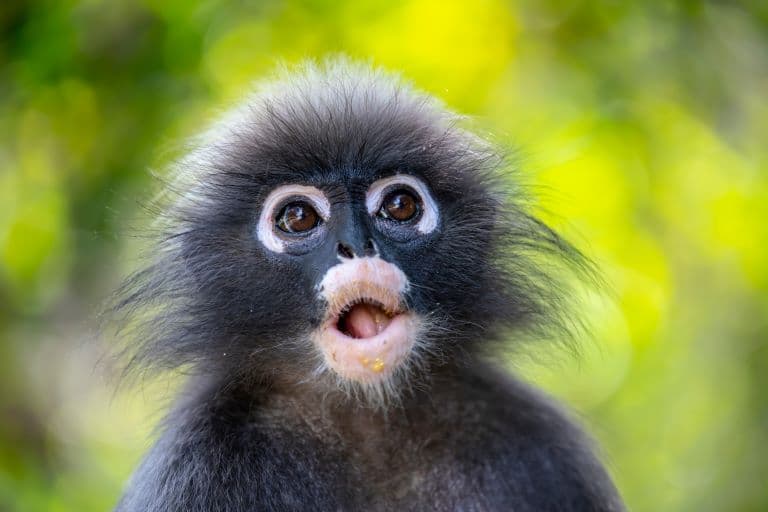
Monkeys Facts Overview
| Habitat: | All habitats: from tundra to Desert; though most are forest species |
| Location: | Worldwide |
| Lifespan: | Up to 117 years so far… |
| Size: | From 15cm (6 inches) to 2.7m (8ft 11 inches) |
| Weight: | 67 kg (589 lb) |
| Colour: | Varied, from grey to brightly multi-coloured. Some hairless. |
| Diet: | Usually herbivorous or omnivorous. |
| Predators: | Most large carnivores, from snakes to lions |
| Top Speed: | (50km/h) 30mph patas monkey |
| No. of Species: | Around 220 |
| Conservation Status: | Least Concern to Critically Endangered (IUCN) |
Despite The Origin of Species popularising the now-obvious and well-established theory of evolution more than 150 years ago, it was far too controversial at the time to even touch on the concept of human evolution.
Since then, though, and for many of the sensible people, the shock that everything was not, in fact, thrown together out of dust a few thousand years ago has mostly worn off and we’re able to look at the fossil record with a more open mind.
And when we do, we find that our family tree is packed with monkeys.
Interesting Monkeys Facts
1. What is a monkey?
Colloquially, and in descending order of kindness, a monkey is a tree-dwelling primate with a tail. To a lesser extent, this might include a mischievous child or even an adult deemed uncivilised.
Monkeys are often pictured with their tails wrapped around a branch like a fifth hand, and they’re well known for enjoying bananas.
This stereotype isn’t far off the mark, though it is limiting. New World monkeys are the only ones with prehensile tails, so you won’t find that kind of monkey business in Africa or Asia. These monkeys represent the superfamily Ceboidea, which is a group of five monkey families from the Americas.
There’s only one family of Old-World monkeys with tails, and this is the Cercopithecidae. These include all the baboons, and vervets, from Africa as well as the geladas and langurs (and more baboons) from Asia.
But this isn’t the end of the line when it comes to monkeys. This latter family is more closely related to the great apes, like orangutans and gorillas, than it is to the New World Monkeys, which means if langurs and tamarins are both monkeys, you are, too.
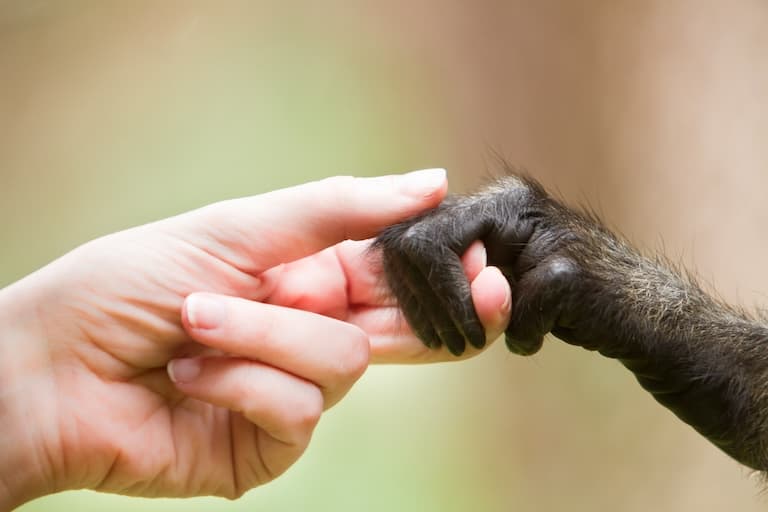
2. Not all primates are monkeys but all monkeys are primates
So, monkeys comprise the great apes, the New World monkeys and the Old World monkeys, but there are other monkey-like animals that aren’t included.
These would be the lemurs, (or wannabe monkeys, as they’re known in baboon circles); the lorises; the galagos, or bush babies; and the tarsiers, who are the closest-living non-monkey primate to monkeys.
Primates date back to at least the dinosaur extinction, likely a little before it, and they’re all related. They’re separated into wet-nosed primates, or Strepsirrhini, which branched off around 63 MYA and includes most of the non-monkeys, and the dry-nosed primates, which includes the rest of us: the monkeys.
Now, you might be thinking, “I’m not a monkey! At the very least I’m an ape” and you’d be wrong on both counts. At the very most you’re an ape! And apes are monkeys, and monkeys are primates. But not all primates are monkeys.
So, how did we get into this predicament?
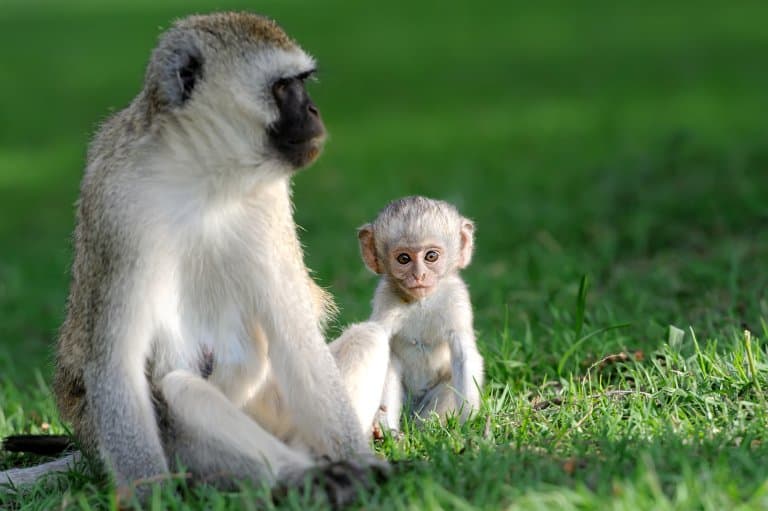
3. Monkeys evolve from monkeys
One common retort to the previous fact is “If we evolved from monkeys, why are there still monkeys?”. And this has quite a simple answer.
The first half of the answer is that we didn’t evolve from those monkeys.
Humans, and all other monkeys around today, evolved from a common ancestor whose population separated into different niches, not from the species of monkey we see around us now.
Clearly, by around 20 years of age, most of us no longer look like the tree-swinging, banana-eating simians we put in cages. So, we’d have to go quite far back to find a common ancestor.
And we do! Our common ancestor with modern-tailed monkeys would have been something like Aegyptopithecus zeuxis, who existed around 30 million years ago. It wouldn’t be until around 25 million years ago that a branch of this lineage would lose its tail.
But not all did. Other descendants of this monkey would keep theirs, as they were still very useful up in the canopy, but for the tail-less monkeys, a more terrestrial environment awaited, and the Great Apes would eventually emerge.
Note here, that this common ancestor is still spawning monkeys as we associate with arboreal, tailed animals, and they’re also spawning various other apes. So, while our lineage descends from a monkey ancestor, there are still monkeys all over the place! 1
4. Speciation requires mutation alongside separation
If this all sounds magical, it isn’t. It’s actually a very simple and repeatable concept. The hardest part to get our heads around is the sheer amount of time it takes to happen.
Human and chimp ancestors’ genomes may diverge by about 0.1 per cent every million years, but only if the two populations would stop having sex with one another.
Being a continuum, it’s hard to define solid lines between species over time, but one of the most useful in many cases is the ability of one animal to produce fertile, healthy offspring with another.
As much as you might desperately want to, you could not naturally conceive with a chimpanzee, because the genes in your reproductive cells are too different than those of your closest living non-human relatives. And this is despite sharing from 96% to 99% of the same DNA.
That’s because humans and chimps have lived in isolation from one another for so long, that their DNA has shifted apart, beyond the compatible level for reproduction.
And this is the key to understanding how species diverge.
Africa and South America broke apart around 180 million years ago. This is well before the separation of New and Old World monkey lineages, so somehow, New World monkeys made it to the island continent before it merged with North America, around 40 million years ago (likely on some kind of floating raft of vegetation while it was still a lot closer to Africa than it is today).
This was an isolation event, that led to the divergence of species from the African ancestor into the array of monkeys we find hanging by their tails and howling in the South American jungle.
We don’t know what caused the separation of humans and chimps, but the process would have been similar. Unable to breed with one another, our respective DNA evolved alongside different environments, and eventually we became so different we stopped sending each other Christmas cards.
This is commonly thought to have happened around 5 or 6 million years ago, but recent research suggests it may have been pushed back as far as 13 MYA.
Regardless, this is why we have so many different monkeys today, despite also descending from monkeys.
And there is incredible diversity in monkeys.
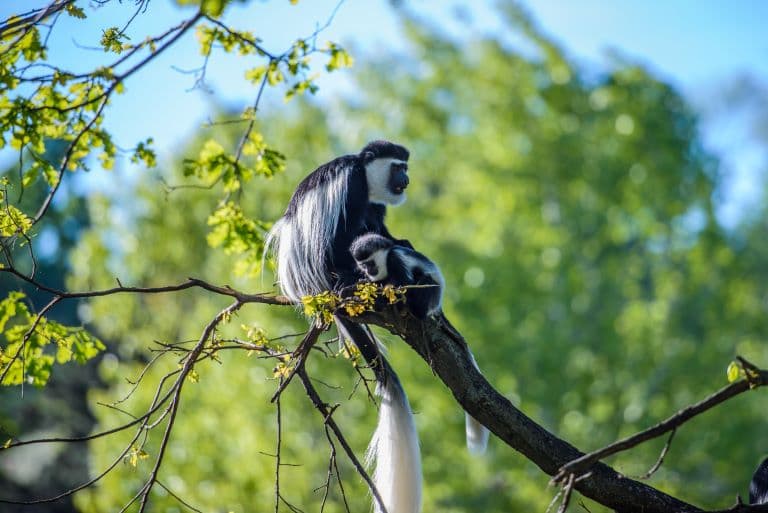
5. The diversity of monkeys.
The Pygmy mouse lemur is the world’s smallest known primate. But by now you should realise how irrelevant this is, because lemurs are not monkeys!
Only slightly bigger, is the world’s smallest monkey at around 12cm-15cm tall and irresistibly cute. This is the pygmy marmoset, and even with its tail included, it can barely stretch to 23cm long. The heaviest of these lightweights will likely be under 80g in weight, and this New World monkey represents one end of the monkey spectrum for size.
At the other are the great apes; of the lot, we’re one of the largest. The heaviest wild gorilla weighed around 267 kg (589 lb), but like people, they can get fat in captivity, and there are some that have pushed 300kg (680 lb).
Embarrassingly, the heaviest humans have more than doubled that record, but the heaviest ape we know to have existed ever, was likely an orangutan-like monster known as Gigantopithecus blacki.
We’ve only got a bit of jaw to go on, but inferences of around 300kg are common, and this animal could likely have stood at around three meters tall. This mysterious monkey went extinct for an unknown reason, around 250 thousand years ago in China. 2
6. Monkeys today
Today, there are still around 220 species of monkeys, including the great apes, and their diversity is more than just size. The Patas monkey is said to be able to reach speeds of up to 55km/h (34 mph), faster than our fastest-ever runner by at least 20%.
But monkeys aren’t just good at running. Gibbons are the masters of branch swinging, or brachiation. Their arms are so highly specialised that they are the best at what they do, swinging between trees effortlessly and with incredible grace.
Monkeys can also be loud. Howler monkeys are considered one of the [loudest animals on the planet], resonating a territorial statement every morning and evening from their branches that extend for miles.
Gorillas and humans live almost exclusively on the ground, while orangutans live almost exclusively in the tree canopy. A lot of this has to do with the absence and presence of tigers, respectively, but each has evolved to specialise in their environment over millions of years.
Monkeys are generally smart and many can use tools, one species is particularly good at this. Some monkeys even keep other monkeys as pets. There’s a huge range in monkey diversity, representing a significant ecological presence in almost every biome.
But the majority live in trees, and because of this, monkeys are now the most threatened vertebrates in the world. 3
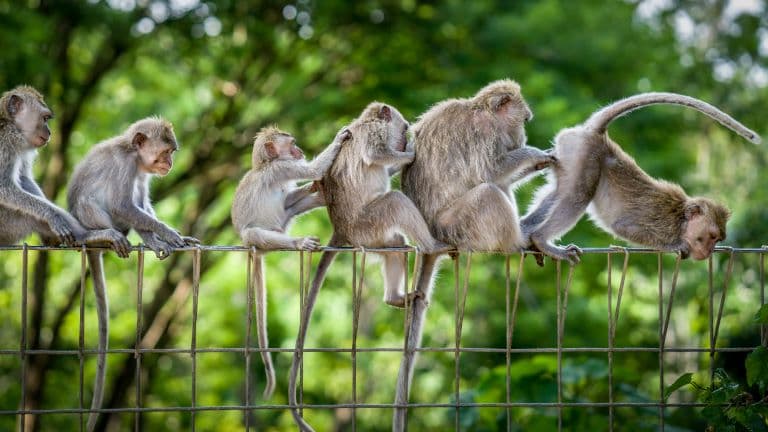
7. Conservation stats
The vast majority of monkey species live in forests, and since forests are the most threatened terrestrial ecosystems, it’s no surprise that a significant portion of monkey species are in danger of extinction.
The majority of primate species are now threatened with extinction, with more than 15 species reduced to less than 3000 individuals. This is due to a combination of climate change, disease, and habitat destruction.
Mountain gorillas are one of the most threatened, with just over 1000 left. Brown spider monkeys, Kaapori capuchins, brown howlers and various langurs, among many other species, are now critically endangered.
Monkeys have radiated into some exceptional niches since the dinosaurs left them open, yet their dominance might soon be coming to an end without our help. 4
8. Monkey Conservation
Monkey conservation, as with all conservation, can be tackled from a multitude of angles. The first step begins at exposure.
Most of the ecological troubles we face today come as a result of a lack of awareness and, then, a lack of direction.
So, awareness is critical to the protection of our monkey species. In countries where monkeys are native, solutions are hands-on, like protecting areas of forest or creating parks. Where monkeys are a foreign concept, people can still help through funding or otherwise supporting established projects and programs.
Some places to get started for the conscientious conservationist would be to follow the WWF’s Great Apes project, in which actually visiting the animals in their home helps to protect them, and Friends of the Earth’s Save the Primates Campaign, to get a feel for what the threats are and how to reduce them. 5
Monkeys Fact-File Summary
Scientific Classification
| Kingdom: | Animalia |
| Phylum: | Chordata |
| Class: | Mammalia |
| Order: | Primates |
| Infraorder: | Simiiformes |
| Suborder: | Haplorhini |
| Family: | Around 11 families |
Fact Sources & References
- CHARLES Q. CHOI (2017), “Fossil Reveals What Last Common Ancestor of Humans and Apes Looked Like”, Scientific American.
- (2024), “What Killed the Largest Known Ape Species Ever?”, Scientific American.
- “Patas Monkey”, Rosamond Gifford Zoo.
- David Fernández (2021), “The Current Status of the World’s Primates: Mapping Threats to Understand Priorities for Primate Conservation”, PubMed Central.
- “African great apes”, WWF.
